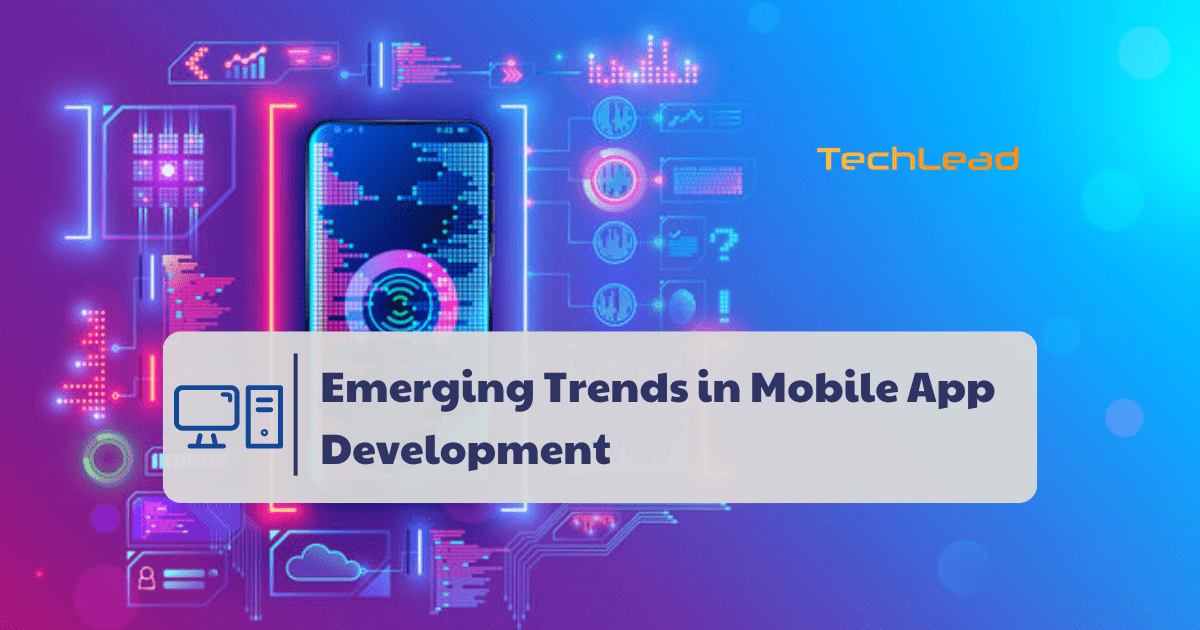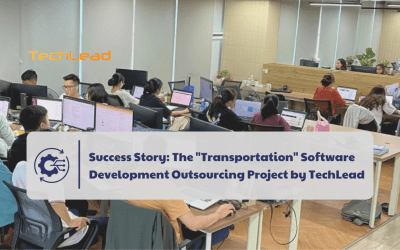In the dynamic field of mobile app development, staying ahead of emerging trends is crucial for developers and businesses aiming to deliver cutting-edge experiences to users. Here’s a deeper dive into the latest trends shaping the future of mobile apps.
Top 13 Emerging Trends in Mobile App Development
Mobile applications have become an integral part of our daily lives, transforming how we communicate, work, shop, and entertain ourselves. As technology evolves rapidly, so do the trends in mobile app development. Understanding these trends is crucial for developers and businesses looking to stay ahead in the competitive app market. In this blog, we’ll explore the top 13 emerging trends that are shaping the future of mobile app development.
Emerging Trends in Mobile App Development (Collected)
1. 5G Technology Integration
The rollout of 5G technology is set to revolutionize mobile app development. With significantly faster speeds and lower latency, 5G enables more seamless user experiences, higher-quality video streaming, and faster downloads. Mobile apps will increasingly leverage 5G capabilities to deliver real-time data processing, augmented reality (AR), and immersive multimedia experiences.
5G Technology Integration (Collected)
Emerging trends powered by 5G Technology
- OTT platforms with 4K streaming
- VR-based gaming apps
- Extremely precise location trackers
- Creative, Interactive, and Data-Intensive Applications
- Smart cities
- Metaverse
The rise of 5G is paving the way for more innovative and immersive applications. As 5G unfolds, it promises to reshape the mobile app development landscape.
2. Artificial Intelligence (AI) and Machine Learning (ML)
AI and ML continue to be transformative forces in mobile app development. These technologies enable apps to offer personalized user experiences, predictive analytics, and intelligent automation. AI-powered chatbots and virtual assistants enhance customer service, while ML algorithms analyze user behavior to optimize app functionalities and content delivery.
Artificial Intelligence (AI) and Machine Learning (ML) (Collected)
Trends in AI/ML mobile app developments to look out for:
- Image recognition
- Face detection
- Text and image classification
- Sentiment recognition and classification
- Speech recognition
- Predictive maintenance
The AI market size is exploding exponentially. These technologies enable businesses to create more innovative, intuitive apps that learn and evolve to meet the ever-evolving user needs.
3. Augmented Reality (AR) and Virtual Reality (VR)
AR and VR technologies are reshaping user interactions and engagement in mobile apps. AR overlays digital content onto the physical world, enhancing gaming experiences, virtual try-ons in e-commerce, and interactive training simulations. VR creates fully immersive environments, used in gaming, virtual tours, and therapeutic applications. Both technologies are expanding beyond entertainment to revolutionize industries like healthcare, education, and retail.
Augmented Reality (AR) and Virtual Reality (VR) (Collected)
The industry is witnessing emerging trends such as:
- The metaverse
- Augmented Reality (AR) glasses
- Autonomous vehicles powered by AR/VR
- Advancements in AR/VR displays
- Remote assistance
- AR-based navigation
The future of mobile app development is poised for a transformative leap with the integration of technologies like AR and VR.
4. Internet of Things (IoT) Integration
The IoT ecosystem continues to grow, connecting everyday devices to mobile apps. From smart home appliances to wearable health monitors, mobile apps serve as centralized hubs for controlling and monitoring IoT devices. IoT integration enhances user convenience, automates tasks, and enables data-driven insights for businesses.
Internet of Things (IoT) Integration (Collected)
IoT trends in mobile app development:
- Edge computing
- AI and AR/VR integration
- Blockchain for security
- Open Source Development
- Greater Hybrid App Development
As IoT penetrates the everyday realm, developers will see a higher demand for intuitive interfaces, robust security, and seamless integrations from IoT apps.
5. Blockchain Technology
Blockchain is gaining traction beyond cryptocurrency, offering secure and transparent transactions in mobile apps. Blockchain’s decentralized nature ensures data integrity, enhances cybersecurity, and facilitates peer-to-peer transactions without intermediaries. Mobile apps utilize blockchain for secure payments, digital identity verification, supply chain tracking, and decentralized applications (dApps).
Blockchain Technology (Collected)
6. Progressive Web Apps (PWAs)
PWAs combine the best features of web and mobile apps, offering fast, reliable, and engaging user experiences. These lightweight apps load instantly, even with poor internet connectivity, and can be accessed directly from web browsers without installation. PWAs improve user retention, SEO performance, and enable businesses to reach broader audiences across various devices.
Progressive Web Apps (PWAs) (Collected)
7. Voice Technology
Voice-enabled applications are becoming increasingly popular due to advancements in natural language processing (NLP) and AI. Voice assistants like Siri, Google Assistant, and Alexa allow users to perform tasks hands-free, from setting reminders to controlling smart devices. Voice technology enhances accessibility and convenience, particularly in automotive, home automation, and healthcare applications.
Voice Technology (Collected)
8. Mobile Wallets and Payment Gateways
The adoption of mobile wallets and digital payment solutions continues to rise globally. Mobile apps integrate secure payment gateways, enabling users to make seamless transactions for purchases, bill payments, and peer-to-peer transfers. Enhanced security features like biometric authentication and tokenization ensure safe and convenient payment experiences for users.
Mobile Wallets and Payment Gateways (Collected)
9. Cybersecurity Measures
As mobile apps handle increasingly sensitive data, cybersecurity remains a top priority for developers. Implementing robust encryption protocols, secure authentication methods, and regular security audits are essential to protect user information from cyber threats. Compliance with data protection regulations such as GDPR and CCPA is crucial for maintaining user trust and avoiding legal repercussions.
Cybersecurity Measures (Collected)
10. Personalization
Personalized user experiences are key to driving engagement and retention in mobile apps. AI algorithms analyze user data to deliver tailored content recommendations, product suggestions, and notifications based on individual preferences and behavior patterns. Personalization enhances user satisfaction, boosts app usage frequency, and increases conversion rates for businesses.
Personalization (Collected)
11. Cross-Platform Development
Cross-platform development frameworks like React Native, Flutter, and Xamarin simplify the process of building apps that run seamlessly on multiple operating systems (iOS and Android). These frameworks reduce development time and costs while ensuring consistent app performance and user experience across different devices. Cross-platform apps also facilitate quicker updates and maintenance.
Cross-Platform Development (Collected)
12. Health and Fitness Apps
The demand for health and fitness apps continues to grow, driven by increasing health consciousness and digital wellness trends. Mobile apps monitor physical activities, track fitness goals, provide personalized workout plans, and offer virtual coaching sessions. Integration with wearable devices and health sensors enables real-time health monitoring and data synchronization for comprehensive wellness management.
Health and Fitness Apps (Collected)
13. Gamification and Interactive Content
Gamification techniques are enhancing user engagement and retention in mobile apps across various industries. By incorporating game-like elements such as rewards, challenges, and leaderboards, apps motivate users to achieve goals, learn new skills, and participate in community activities. Interactive content such as 360-degree videos, live streaming, and interactive storytelling captivates audiences and fosters immersive user experiences.
Gamification and Interactive Content (Collected)
Considerations When Implementing Emerging Trends in Mobile App Development
As mobile app development continues to evolve with emerging trends and technologies, it’s crucial for developers and businesses to navigate these advancements thoughtfully and strategically. Here are key considerations to keep in mind when applying new trends in mobile app development:
1. Understand User Needs and Preferences
Before adopting any new trend or technology, it’s essential to conduct thorough research to understand your target audience’s needs, preferences, and behaviors. User-centric design ensures that new features or functionalities align with user expectations and contribute positively to the overall user experience.
2. Choose the Right Technology Stack
Each emerging trend in mobile app development comes with its own set of technologies and frameworks. Selecting the appropriate technology stack based on project requirements, scalability, platform compatibility, and developer expertise is crucial. Evaluate factors such as performance, security, ease of maintenance, and community support before making technology decisions.
3. Prioritize Performance and Efficiency
While integrating new features or technologies, prioritize app performance and efficiency. Ensure that the app remains fast, responsive, and optimized across different devices and network conditions. Performance testing and optimization should be ongoing throughout the development lifecycle to deliver a seamless user experience.
4. Address Security and Privacy Concerns
As mobile apps handle sensitive user data, prioritize security and privacy considerations from the outset. Implement robust security measures such as data encryption, secure authentication methods, and compliance with data protection regulations (e.g., GDPR, CCPA). Conduct regular security audits and updates to mitigate vulnerabilities and protect user information.
5. Provide Seamless Integration and Compatibility
Ensure seamless integration of new features with existing app functionalities. New technologies should integrate smoothly with backend systems, APIs, and third-party services. Compatibility across different mobile devices, operating systems (iOS, Android), and screen sizes is essential to reach a broader user base and maintain consistent user experience.
6. Foster Continuous Learning and Adaptation
Stay updated with industry trends, technological advancements, and user feedback to adapt and evolve your mobile app continuously. Foster a culture of continuous learning within your development team to explore new technologies, refine skills, and implement best practices. Embrace agile methodologies to iterate quickly and respond effectively to changing market demands.
7. Test Rigorously and Gather Feedback
Conduct comprehensive testing throughout the development process to identify and address issues early. Perform functional testing, usability testing, performance testing, and compatibility testing across various devices and platforms. Gather feedback from beta testers, early adopters, and end-users to validate assumptions, improve usability, and refine features based on real-world usage.
8. Ensure Scalability and Future Readiness
Plan for scalability to accommodate future growth and evolving user demands. Design the architecture and infrastructure of your mobile app to scale seamlessly with increasing user base, data volume, and feature enhancements. Adopt modular and flexible design principles to facilitate easy updates and iterations without disrupting the user experience.
By carefully considering these factors when implementing emerging trends in mobile app development, businesses can leverage new technologies effectively to deliver innovative, user-centric mobile experiences. Balancing innovation with practical considerations ensures that mobile apps not only meet current market expectations but also remain competitive and sustainable in the long term.
Conclusion
Embracing these emerging trends in mobile app development empowers businesses to innovate, enhance user experiences, and stay competitive in a rapidly evolving digital landscape. By leveraging technologies like 5G, AI/ML, IoT, AR/VR, cross-platform development, PWAs, and maintaining rigorous security standards, developers can create powerful mobile solutions that meet the evolving expectations of users and drive sustainable growth in diverse industries.
Please contact TechLead so we can support you in Software Development to create the best solutions!
TechLead leading technology solution for you (Collected)
TECHLEAD – Leading technology solution for you!
Hotline: 0372278262
Website: https://www.techlead.vn
Linkedin: https://www.linkedin.com/company/techlead-vn/
Email: [email protected]
Address: 4th Floor, No. 11, Nguyen Xien, Thanh Xuan, Hanoi





